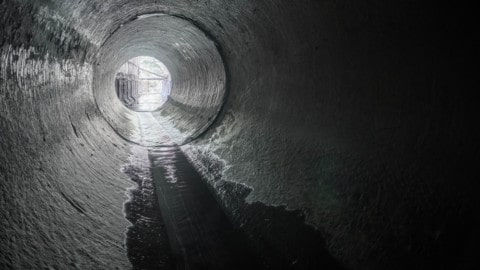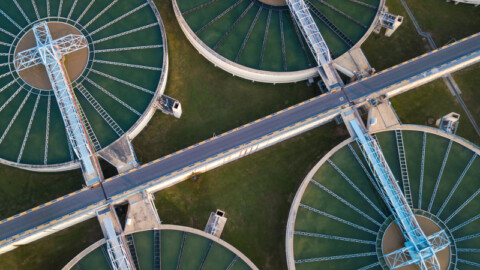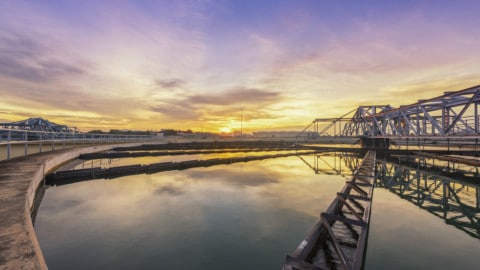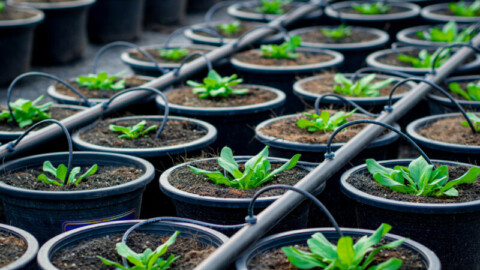As the world moves to a more sustainable future, designers and wastewater asset owners are expected to, and are doing, the same. They are looking predominantly at energy savings, but are they concentrating too much on the momentary efficiency achieved with clean water when the pumps are tested when new? And are they also considering the consumption of other finite materials when considering pumping station designs? Hydro Innovations helps
to answer these questions.
The general industry standard is to design new wastewater pump stations with two submersible pumps sitting at the bottom of a wet well which has been designed to be large enough to house the two pumps, and have enough capacity to allow the minimum amount of starts per hour. Wells will generally be 2-3m in diameter and house guide rails, discharge bends, ladders and liquid level control devices. Pumps may be selected against criteria which may include pump efficiency.
During the life of the pump station, efficiencies will decrease because of general wear, but also because of partial blockages (which are hard to detect) and any losses through leaking discharge connections. Pumps will run for longer hours, consuming up to 40 per cent more energy than expected. The wearing can be catered for by adjusting or changing wear rings, but this needs several operators and lifting apparatus, so may not be done as regularly as needed. This gets tolerances back to ‘new’, but does not address the partial blockage issue or the lost energy through leaks in discharge connections. At some stage the guide rails will need replacing, as will the discharge elbow and possibly lifting chains. This scenario may not be considered the most sustainable solution.
Some designers are thinking outside the box, and are looking for pumps to deliver sustained efficiency for the life of the pump, and are looking for more sustainable total solutions.
Using Gorman-Rupp self priming sewage pumps, wet wells can be much smaller (because only the suction lines and liquid level devices need to be inside the well), guide rails are not needed (so don’t need to be replaced), and neither are discharge elbows and lifting chains. This constitutes a reduction in the raw materials needed to construct the wet well and maintain the items in it over the life of the asset, not to mention the use of cranes and vehicles to provide this maintenance won’t be necessary (decreasing the carbon footprint).
Gorman-Rupp sewage pumps also have a self cleaning wear plate system to greatly reduce the incidence of partial blockages, and externally adjustable clearances that requires only minutes from one operator to keep pumps at peak efficiency (not hours by several operators as is the case with submersible pumps). Again, decreasing the carbon footprint.
Surface mounted pumps may not be the solution for all wastewater pumping stations, but because of their sustainable efficiency, easy access and safer working environment for operators and smaller wet well needs, Hydro Innovations believes that they should be considered.
For the complete white paper on wastewater pump operator safety, go to www.pump-stations.com.au or call Hydro Innovations on 02 9898 1800 or email [email protected].



















